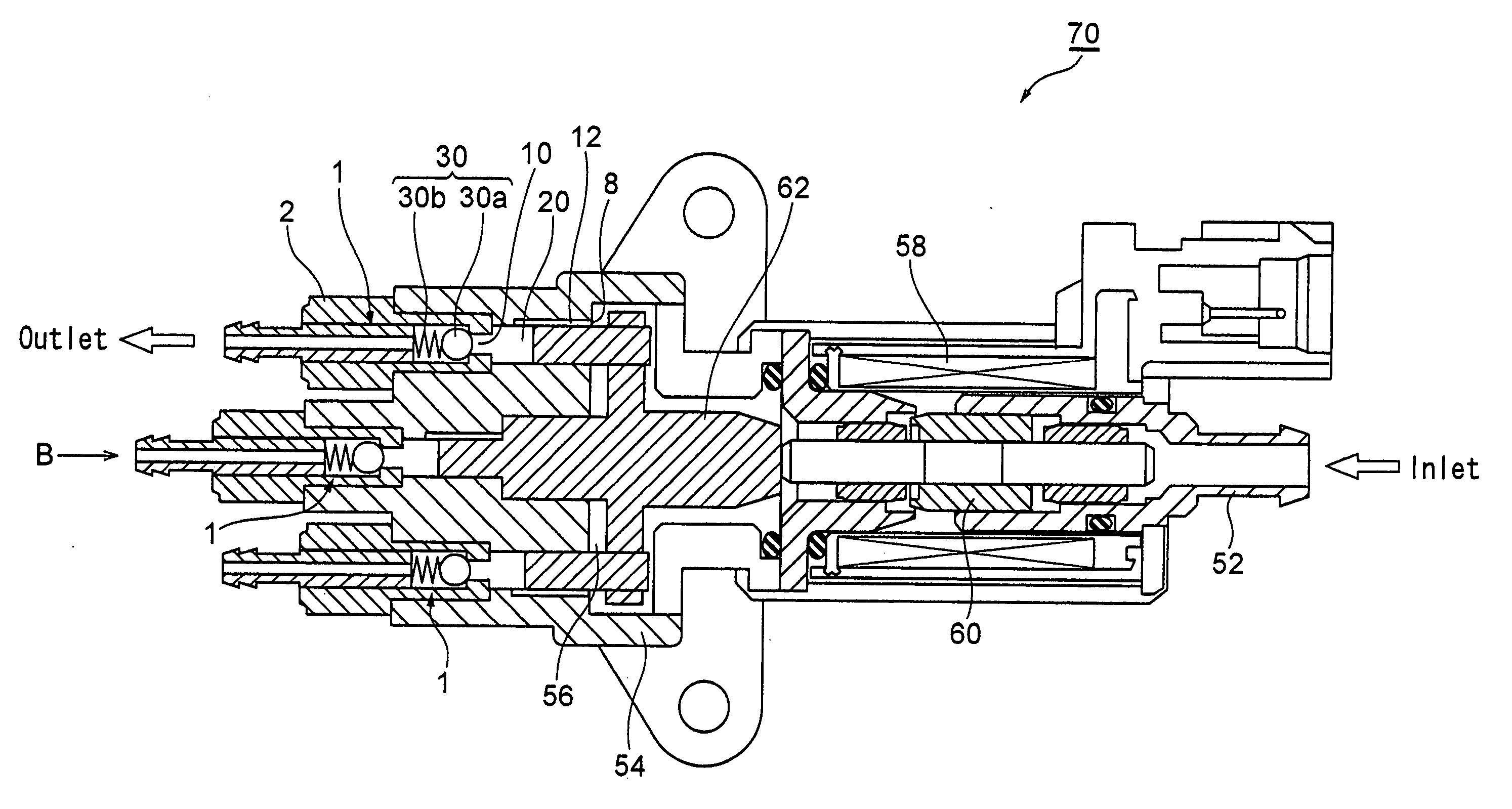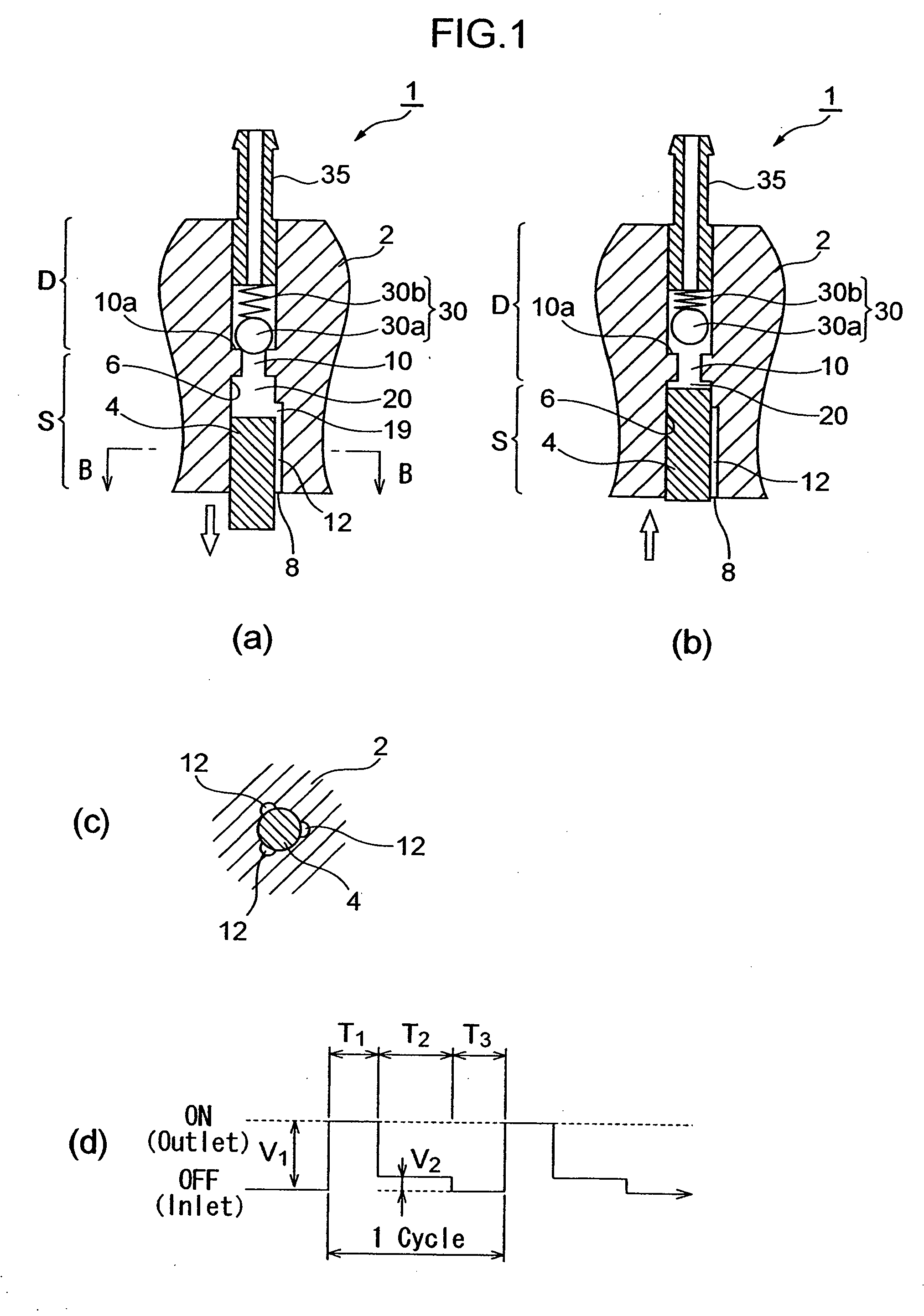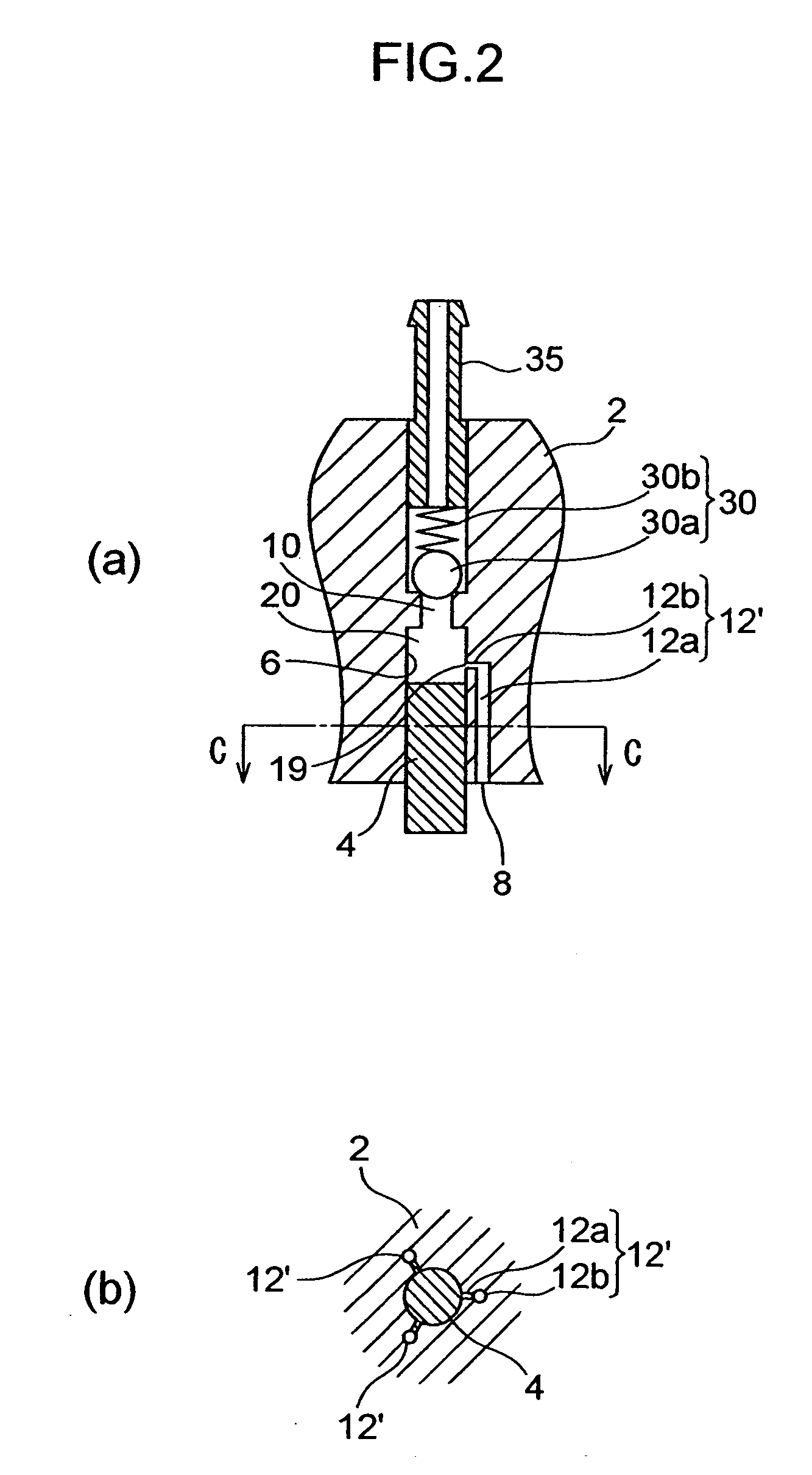Plunger pump and method of controlling discharge of the pump
a technology of pump and discharge amount, which is applied in the direction of pump, positive displacement liquid engine, piston pump, etc., can solve the problems of large number of components, complicated valve structure, and complicated assembly, so as to reduce both noise and vibration in using the pump, and easily change the amount of discharge. , the effect of reducing the number of components
- Summary
- Abstract
- Description
- Claims
- Application Information
AI Technical Summary
Benefits of technology
Problems solved by technology
Method used
Image
Examples
Embodiment Construction
[0057] Embodiments of the present invention will specifically be described below with reference to accompanying drawings.
[0058]FIG. 1 shows a plunger pump 1 according to one embodiment of the invention. As shown in the figure, the plunger pump 1 of this embodiment is provided with a cylinder 2, and a cylindrical plunger 4 inserted in the cylinder 2 slidably. More specifically, the cylinder 2 has a suction side S and discharge side D, and the plunger 4 is inserted slidably in a circular cross-section continuous hole 6 formed on the suction side S of the cylinder 2. The plunger 4 is provided with an inlet 8 to suck a fluid such as lubricant oil from a fluid source such as a reservoir tank not shown. The cylinder 2 is provided with an outlet 10 that discharges the fluid sucked through the inlet 8 and that is communicated with the continuous hole 6.
[0059] The plunger 4 is slid inside the continuous hole 6 by the electromagnetic activation force generated by applying current to an elec...
PUM
 Login to View More
Login to View More Abstract
Description
Claims
Application Information
 Login to View More
Login to View More - R&D
- Intellectual Property
- Life Sciences
- Materials
- Tech Scout
- Unparalleled Data Quality
- Higher Quality Content
- 60% Fewer Hallucinations
Browse by: Latest US Patents, China's latest patents, Technical Efficacy Thesaurus, Application Domain, Technology Topic, Popular Technical Reports.
© 2025 PatSnap. All rights reserved.Legal|Privacy policy|Modern Slavery Act Transparency Statement|Sitemap|About US| Contact US: help@patsnap.com



